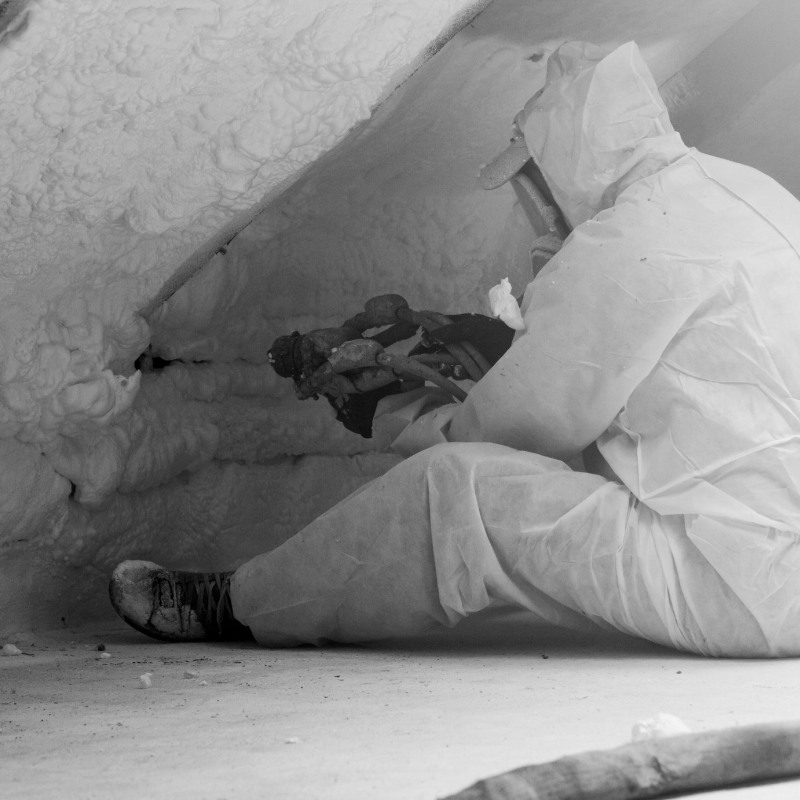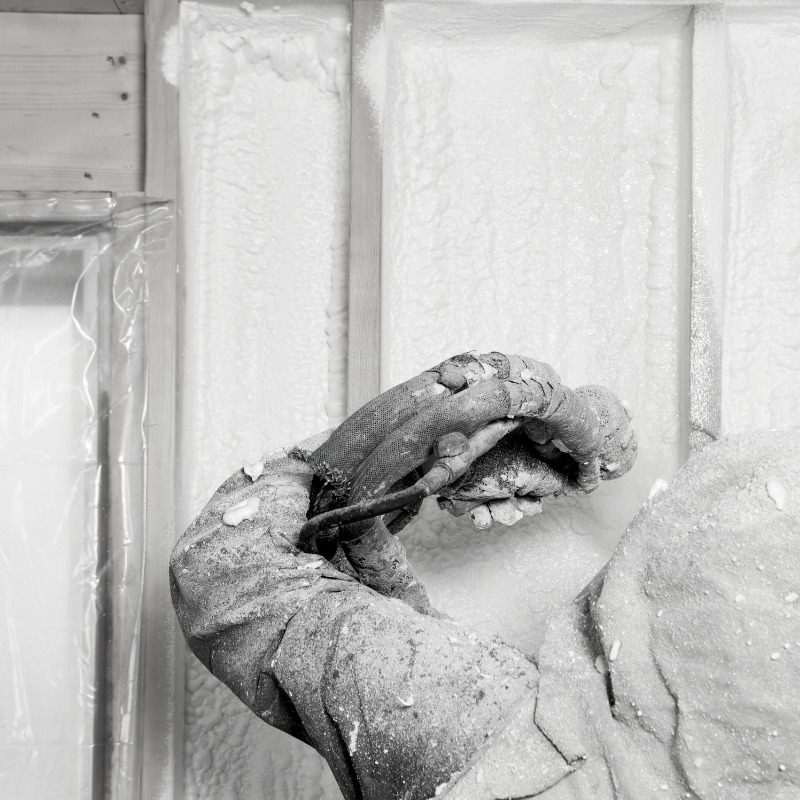Understanding Crawl Spaces and Their Challenges
The crawl space refers to an unfinished, low-ceilinged area beneath the first floor of a building. It provides easy access to the wiring, plumbing, and other utilities that run underneath the structure. Despite its usefulness, the crawl space, especially vented crawl spaces, can introduce a host of challenges to your home.
Definition and Role of Crawl Spaces
Crawl spaces serve to mitigate flooding and minimize home damage in flood-prone regions, while also elevating vital pipes, ducts, and wires above ground level. These spaces earn their name due to the need to crouch and crawl within them, as they typically feature solid walls and limited standing room, often measuring less than 5 feet in height.
Two main types of crawl spaces exist: vented and sealed. Vented crawl spaces are commonly linked with moisture issues and mold growth. The construction of crawl spaces is often preferred due to their cost-effectiveness compared to basements.

Common Problems in Crawl Spaces
Uninsulated crawl spaces can cause many problems. Some common problems include:
Mold
Crawl spaces are the perfect condition for mold growth because they are dark, have oxygen, and contain food, moisture and a comfortable temperature.
Cold Floors
Crawl spaces are not properly sealed and conditioned, cold air from the vents can enter the crawl space and cool the space below the home.
High Humidity
Water in the crawl space can cause high humidity in the home, which can lead to mold and mildew. Humidity can also weaken floor joists and therefore the foundation.
Wood Rot
Where there is moisture and mold there is rot. Wood rot is commonly found in crawl spaces. Visible fungal growth is a sign of wood rot.
Sagging Floors
Homes with crawl spaces are more likely to have sagging floors because there is little space between the ground and the flooring. Wood rot damage caused by moisture leads to sagging.
Pests
Crawl spaces are the perfect shelter and breeding ground for pests, such as mice and rats, if they are not properly maintained.
Benefits of Spray Foam Insulation In Crawl Spaces
The advantages of spray foam insulating crawl spaces include, uniform coverage around pipes, wires, ducts, and difficult to reach areas in your crawl space, like rim joists. Due to its expansive nature, spray foam insulation in crawl spaces provides an airtight seal that reduces heat transfer, significantly improving your home’s energy efficiency.
Spray foam insulation has many benefits including:
Improved Energy Efficiency
Spray foam insulation improves energy efficiency by creating a barrier that reduces heat transfer between crawl space and your living area. This helps to reduce energy bills by keeping your home warmer in winter and cooler in summer, lowering your heating and cooling bills and leaving your home comfortable year round.
Mold and Moisture Control
Spray foam insulating crawl spaces can help to control moisture in crawl spaces by preventing water from entering and reducing high humidity levels. Spray foam can also be used as a flood barrier. Spray foam insulating crawl spaces can help prevent mold growth by eliminating the moisture that mold needs to thrive. Mold can not grow on spray foam insulation.
Pest Control
Spray foam insulating your crawl space keeps pests out of crawl spaces. Spray foam is a hard, dense material that fills all small holes, gaps, and crevices making it difficult for pests and rodents to enter. Unlike traditional insulation, spray foam isn’t a food or bedding source for pests.
Long Term Savings and Return on Investment
A significant advantage of spray foam insulating your crawl space is its energy efficiency. It helps maintain a consistent temperature in the living space, reducing heating and cooling bills. Given the energy savings and the fact that spray foam lasts a lifetime, the return on investment for spray foam insulation is realized within a few years.
Insulating Crawl Space Services Victoria
Crawl Spaces
Not all homes have crawl spaces but for those that do, it is important that they are considered when trying to manage the heating/insulation of your home. There are two different approaches that can be used when dealing with a crawlspace.
Cold Crawl Spaces
A cold crawlspace approach is designed to allow cold air and full ventilation through the crawlspace. To insulate the home above, insulation is added to the ceiling of the crawlspace to help prevent the cold air in the crawlspace from moving up into the home. Ideally, the floor joist above the crawl space will be 8 inches deep to allow for an R28 batt to fit into it. For 2×6 floor joists, a high density product can be used, which is a bit more expensive but will provide the necessary insulating R value. Batts are installed and strapped in place with a breathable material to ensure that moisture is not trapped between floors.
If the floor of the crawlspace is concrete, there should not be any moisture issues; however if it is an exposed dirt floor, a ground seal should be installed to prevent overly moist air from permeating the batt insulation which causes it to lose its insulating properties as well as becoming heavy which makes it difficult to keep in place in the floor joist pocket. Ground seals can vary in price depending on how thick and elaborate a homeowner wants to get. For most basic situations, a 6mm poly is adequate to keep moist air at bay while not costing the homeowner a huge amount. Heavier and more elaborate options are available depending on the situation.
Warm Crawl Spaces
A warm crawlspace approach is used when there is a source of heat or ignition located in the crawlspace. In this situation, an insulated blanket or rigid insulation is fastened to the exterior walls of the crawlspace or even spray foam is applied to insulate the concrete. (If spray foam is used, it is important to use 2lb closed cell foam which forms its own vapour barrier. It is also important to note that spray foam and some rigid insulation products give off dangerous vapours if they are exposed to flame and fireproofing of them may be required. Alpine is one of the few companies that applies a fireproofing substrate to its foam in these instances.)
Exposed Joist ends are insulated with fibreglass batts and the vents to the crawl space are closed off. A ground seal should also be applied in this design if there is an exposed dirt floor in order to eliminate the amount of cold moist air entering the space. No insulation should be added to the ceiling of the crawlspace as the heat in the crawlspace should be allowed to move upwards, keeping the floors above warmer.
While all new construction requires heated crawl spaces, cold crawl spaces also have their merits. It is essential that whichever design is utilized, that it is installed properly with the right components.
Removals
Often it is best to remove old, wet, sagging insulation as it has lost its thermal properties and carries an odour that can permeate up into the living areas above.
Frequently Asked Questions
Yes, insulating crawl spaces helps to reduce noise pollution in your home by absorbing sound. Spray foam insulation acts as a sound barrier to reduce noise transfer and sound transmitted into your living spaces.
Again, YES! Crawl Space insulation increases the resale value of your home by making it energy efficient and comfortable. Every potential homeowner would prefer to buy a thermally insulated home that saves on energy costs.
Yes, another significant benefit of crawl space insulation is that it increases the air quality in your home by making it air-sealed, preventing mold, mildew, dust and unwanted air pollutants from entering.
While the upfront costs can be slightly more pricey than alternative insulations, its one time lifelong application, and many benefits far outweigh the cost over time and actually ends up saving you even more money when you factor in both energy costs and future replacement costs of traditional insulants.
While it is not recommended, it is possible to do so. It may result in a number of negative consequences, including concerns with quality and health & safety. If you decide against employing experienced contractors, you should be aware of the seriousness of some of the hazards involved with installing your insulation. Another consideration is that DIY spray foam kits also tend to be more expensive.
Learn About Our Crawl Space Insulation Rebates
Great news for homeowners looking to upgrade the energy efficiency of their home! There are two major rebate/grant programs available to homeowners in BC: both the federal Canada Greener Homes grant program and the provincial CleanBC Better Homes rebate program.
Additionally, for households that qualify, the CleanBC program also offers an Income Qualified Program (IQP) that can cover 60% or 95% of your upgrade.
Your Alpine estimator can provide you with an idea of what you may qualify for in terms of a rebate, once they have conducted their inspection and prepared your quote. As it is the responsibility of the homeowner to apply for the grant, it is important that homeowners read and understand the program and its requirements.

